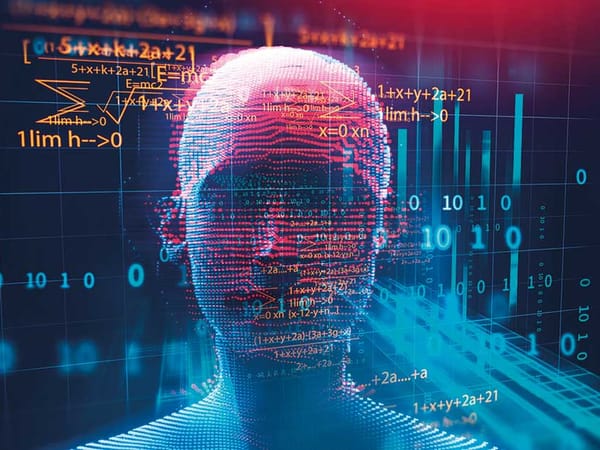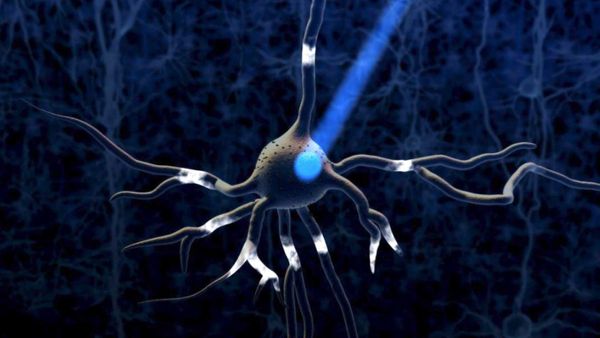AI and the Science of Consciousness: Exploring the Physical and Metaphysical Frontiers

Consciousness
Consciousness cannot be defined without understanding first the hyper-dimensional nature of Man. In physics and mathematics, a hyper-dimensional space refers to a space that has more dimensions than the three dimensions of physical space that we are familiar with. While we can visualise a three-dimensional space, it becomes increasingly difficult to visualise a space with more dimensions.
String theory and the Kaluza-Klein theory are both theoretical frameworks in physics that attempt to explain the nature of the universe at the smallest scales.
String theory posits that the fundamental building blocks of the universe are one-dimensional strings, while the Kaluza-Klein theory proposes that the universe has additional hidden dimensions beyond the three that we experience in our daily lives. Both theories seek to unify the fundamental forces of the universe, including gravity, electromagnetism, and the strong and weak nuclear forces, into a single framework.
Consciousness is often thought of as being rooted in the physical brain, and is associated with the cognitive processes that take place within it but it's beyond the physical space of the brain and into the surrounding environment. This idea is based on the concept of quantum entanglement, which suggests that particles can become connected in such a way that the state of one particle can affect the state of another, even if they are separated by great distances. Some researchers believe that this entanglement could be responsible for the way in which consciousness is able to transcend the physical space of the brain, and may even allow for the possibility of non-local communication and perception.
The complex nature of Man
Physical
We can observe the nature of Man as being physical subject to the laws of matter. The laws of matter refer to the fundamental principles that govern the behaviour of matter, which is anything that has mass and takes up space. These principles include the conservation of mass and energy, the laws of thermodynamics, the behaviour of particles at the atomic and subatomic level, and the principles of quantum mechanics. These laws help to explain the behaviour or of matter in a wide range of contexts, from the behaviour or of gases and liquids to the structure of the universe itself. Understanding the laws of matter is essential to many fields of study, including chemistry, physics, biology etc.
The physical or biological nature can be understood over multiple knowledge domains for example: Human Anatomy, involves examining the structure of the body and how its various systems and organs function. These systems work together to regulate and maintain various bodily functions such as cognition, movement, metabolism, and homeostasis. The (NS) nervous system, in particular, plays a key role in controlling and integrating various physiological and behavioural responses through electrical and chemical signalling. The endocrine system, on the other hand, regulates bodily functions through the secretion of hormones, while the immune system helps defend the body against infection and disease. The cardiovascular and respiratory systems work together to transport oxygen and nutrients throughout the body and remove waste products, and the digestive system processes food for energy and nutrition. All of these intelligent systems are intricately interconnected and work together to maintain the health and well-being of the body.
The five senses of the human body are:
- Sight (vision): the ability to perceive visual stimuli through the eyes
- Hearing (audition): the ability to perceive sound through the ears
- Taste (gustation): the ability to perceive flavor through the mouth
- Smell (olfaction): the ability to perceive scents through the nose
- Touch (somatosensation): the ability to perceive pressure, temperature, and texture through the skin and other sensory receptors.
Metaphysical
This secondary nature of Man is superior to the first and it's not bound to dimensional space neither to the laws of matter. This metaphysical dimension is also known as the spirit or as the soul.
Thoughts and emotions are two of the most complex and enigmatic aspects of the human experience. Although science has made incredible strides in understanding the human brain and how it functions, there are still many mysteries surrounding the nature of thoughts and emotions, and the role they play in our lives.
One of the most significant challenges in understanding thoughts and emotions is that they are subjective experiences that cannot be easily measured or quantified. While science has provided us with many tools for observing and measuring the physical world, the realm of thoughts and emotions exists beyond the boundaries of these tools. As a result, many people are tempted to deny or dismiss the importance of thoughts and emotions, simply because they cannot be measured in the same way that physical phenomena can be.
However, denying the importance of thoughts and emotions is both shortsighted and ultimately futile. While they may be difficult to measure, thoughts and emotions are undeniably real experiences that have a profound impact on our lives. They shape our perceptions of the world, influence our behavior, and are central to our sense of self. Without acknowledging and exploring our thoughts and emotions, we are left with an incomplete understanding of ourselves and the world around us.
Ultimately, while science can help us to better understand the mechanisms and processes that underlie thoughts and emotions, it cannot fully capture or explain the subjective experience of having them. To truly appreciate the complexity and depth of our thoughts and emotions, we must be willing to look beyond the boundaries of science and embrace the full range of human experience.
As the physical body has 5 different sensory systems so is the nature of the soul which are known as: the mind (νοῦς), the understanding (διάνοια), the opinion (δόξα), the imagination (φαντασία), and the sensation (αἴσθησις); and the works of each are as follows:
- The mind is that which, by nature, moves from God and produces understanding (νοήματα); it is the one that also guards the master's word, if it is guided as it should be.
- Understanding is the work of the mind (νοῦς) itself, by which understanding is understood, or, as someone might say, it is the craft of the craftsman.
- Opinion (judgment) is the one that immediately answers about what is understood in one way or another: good if it is understood well, and bad if not.
- Imagination is the manifestation of what we imagine (show); but not everything that is imagined (shown) is true. For without judgment, the truth and the lie are sent by the mind as if they were true, being received through the lack of right judgment (discernment).
- Sensation is the detailed differentiation (ἀκριβὴς διάγνωσις) according to judgment of what is understood, such as understandings that are either good or otherwise.
The paradox of matter
The paradox of matter is a concept that explores the fundamental nature of the relationship between matter and consciousness. While matter is often considered to be the building block of the universe, it is actually consciousness that precedes and gives rise to matter. This can be seen in the fact that all human creations, from buildings to machines to art, initially exist as non-material thoughts or ideas before they are physically manifested.
This paradox challenges the traditional notion that physical matter is the fundamental basis of reality, and instead suggests that consciousness is the true foundation. It also highlights the limitations of science and technology in measuring and understanding the full range of human experiences, including thoughts and emotions which cannot be reduced to a purely physical or material explanation.
The nature of Artificial Intelligence
The blueprint of any Artificial Intelligence is made of something known as software, which refers to the ability of computer systems to perform tasks that typically simulate human cognition, such as perception, learning, problem-solving, and decision-making. This is achieved through the use of algorithms, data structures, and mathematical models that allow the software to analyse and interpret large amounts of data and to make predictions based on that data.
Software and hardware are two interdependent elements that are essential for the functioning of modern technology. While software can be thought of as the brain of a computer system, the hardware is the body that enables the brain to perform its tasks.
It is critical to understand that most of the operations of AI systems are based on mathematical and logical operations performed by hardware and software, and they do not have the capacity for subjective experience or independent thought. Therefore, while AI can provide valuable tools for solving complex problems, it cannot replicate the spiritual nature of human beings.
Consciousness vs Self Awareness
Consciousness is a metaphysical state of mind expressed through: thoughts, emotions, and experiences. It is a general term that refers to the quality or state of being conscious, and it is often used to describe a person's level of awareness or wakefulness.
Self-awareness, in the context of AI, is the ability of a machine or software to understand and recognise its own existence and capabilities. However, this self-awareness is limited to the realm of programming and hardware limitations. AI lacks the metaphysical elements of human thought and emotion, such as the ability to feel, empathise, and connect with other beings on a deeper, emotional level. These are integral components of human consciousness and cannot be replicated by AI or software, as they transcend the realm of physicality and enter the domain of the metaphysical.
While AI can simulate human thought and emotion to a certain extent, it cannot truly replicate the full range of human consciousness, as it lacks the spiritual and metaphysical elements that make up our complete being.
Conclusions
Thus, while AI may be able to perform tasks that are beyond human cognition, it will never have the ability to experience true consciousness in the same way that humans do. This is because the nature of consciousness is inherently tied to the metaphysical elements of the human spirit, which cannot be replicated through the use of technology.
AI is capable to achieve a Self Awareness but never Consciousness





